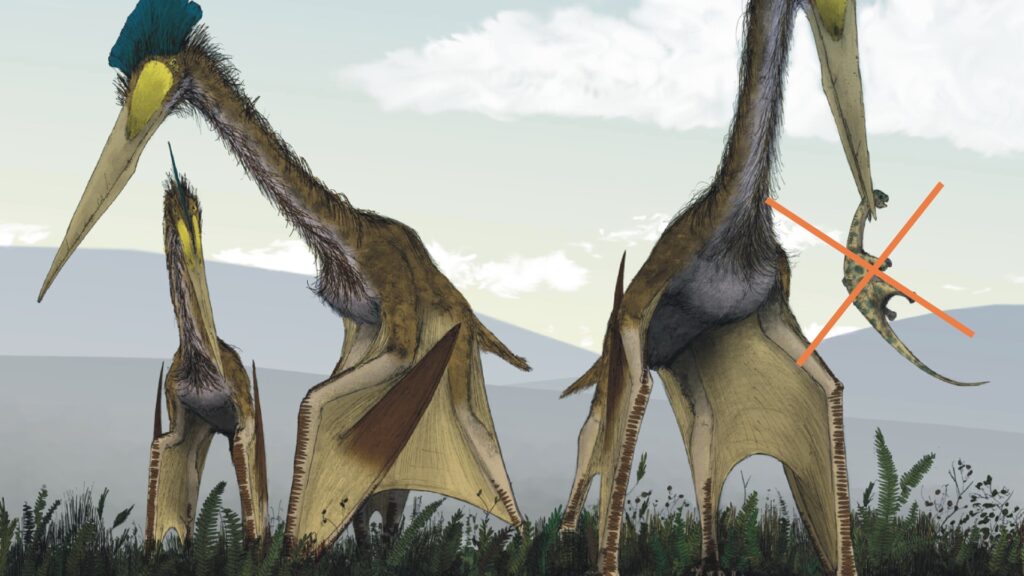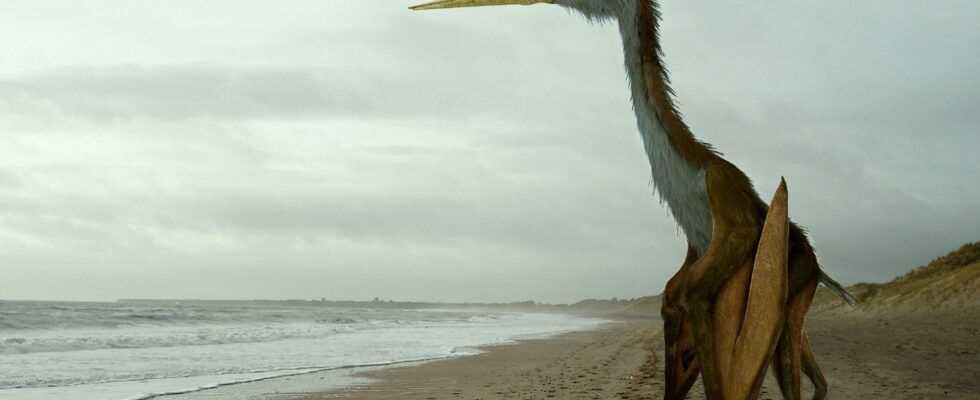Have you ever heard of Quetzalcoatlus?
70 to 66 million years ago, the Quetzalcoatlus trod the soil of the Earth and sailed through the heavens. It is not a dinosaur, but it is a close cousin. Now completely extinct, it is the largest flying animal known to date. Its wings extended over 11 meters, which also matches its estimated wingspan. In shoulder height, it takes around 3 meters.
He also has a rather strange morphology, halfway between the albatross and the bat. Its strangeness and immensity is at the origin of a debate among paleontologists: how did it fly… and could it even fly?
Recent work on the Quetzalcoatlus fossils led to several articles published in December 2021 in Journal of Vertebrate Paleontology. They offer new answers on how this pterosaur flew. ” This is the first real in-depth look at the entirety of the largest animal ever to fly known to date. Results are groundbreaking for the study of pterosaurs – the first animals, after insects, to develop propulsion flight », Indicate the authors on the site of the Natural History Museum.
He was leaping 2 meters to take off
Paleontologists have classified and studied most of the bones found. It was the beak that first caught their interest. Looking at it from every angle, they deduced that the Quetzalcoatlus could not feed on carcasses or chew meat: it probably had to pounce on its prey, on the surface of the water, to swallow it entirely, with a single blow, various fish, invertebrates and other small amphibians.
Then the articles rule out the possibility that this pterosaur could not fly. But according to the authors, it did not start its flight by running on the ground like an albatross: their wings, too bulky, would have slowed down such a technique of flight by touching the ground throughout. In fact, they probably didn’t propel themselves by pushing their wings against the ground, like a bat.

Instead, the scientists behind this work estimate that the Quetzalcoatlus made a jump of two meters, or “ twice the height of their hips ”, Allowing them to take off their wings and start a deeper flight with a first flap. This assumes a lot of strength in the legs.
Then how could he fly in the air? By studying the bones, the authors suggest that 67 million years ago, the Quetzalcoatlus was seen soaring in the air like a vulture, taking turns while tilting its very large head.
An unconventional landing
Last step: land. For the authors, the pterosaur would have been ” behaved like an airplane, slowing down until it was about to fall from the sky before touching down “. He then landed with his hind legs. ” Then he puts his front legs down, adopts a four-legged posture, straightens up and walks away. This landing is nothing conventional and, above all his gait once on all fours was probably unlike anything we know today in animals. Because despite his physique close to that of bats, he could not use his wings to walk, but had to use his “arms” before.
Due to its large wings, ” to avoid tripping, the animal first raised its left arm, then advanced its left leg with a full step, before resting the hand on the ground “. A process that he alternated left and right, much faster than we imagine (he did not necessarily seem awkward). ” This suggestion is linked to the fossilized traces found in France, the shape of which is too strange for a terrestrial quadruped to have made them. », Specify the authors.
